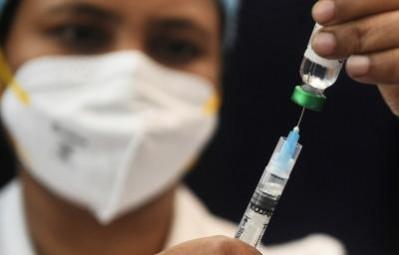India's battle against the Covid pandemic has been an example, showing the world how a pandemic should be managed. As the country was fortunate enough not to be among the first nations hit by the virus, India started its fight with temperature screening of incoming passengers on flights.
The first reported case of Covid infection in India was reported on January 30, 2020, being a student evacuated from China's Wuhan, and the first death was reported on March 12, 2020.
However, the journey for the nation has not been an easy walk; instead it was tumultuous, to say the least. From lakhs of Covid cases being reported in a single day, the nation has been able to control it and has been reduced to zero a number of times. India registered a single-day rise of 210 new coronavirus infections, while the number of active cases further declined to 4,047 on this Saturday.

From a sudden peak of infection in the first wave to the ravaging second wave and to a record number of vaccinations, the country witnessed many lows and highs during last three years as the virus continued to infect public impacting lives and livelihood. The Omicron led third wave also knocked the country, but the only weapon against Covid 'Vaccination' saved the nation from the cruel clutch of infection.
Beginning with the first phase of vaccinations for frontline and healthcare workers, and the second phase with those 45 years and above, India has administered a total of over 219 crore vaccine doses till date. On May 1, 2021, vaccinations began for all those aged 18 years and above.
Two made-in-India vaccines Covishield and Covaxin were granted emergency use authorisation on January 2, 2021. Later, the nationwide vaccination program was rolled out on January 16 with healthcare and frontline workers first in line to get vaccinated. India achieved the milestone of one crore vaccinations on February 19.
From March 1, 2021, a vaccination drive began for those above the age of 60 years and those with co-morbidities in the 45-60 year age group. All above the age of 45 years became eligible for Covid vaccination from April 1. All adults (18+) became eligible for Covid vaccination on May 1.
India administered the first 25 crore doses of vaccines on June 25 last year, and hit the vaccine century with 100 crore of vaccines on October 21, 2021. Later, the government launched Har Ghar Dastak vaccination campaign to achieve 100 per cent first dose coverage on November 3, 2021.

The vaccination drive for the adolescent population (15-18 years) began on January 3, 2022. The administration of precautionary doses began for frontline workers and vulnerable people above the age of 60 years from January 10 this year.
"Our vaccines were rolled out covering the most vulnerable people in descending order. This was exemplary. We also countered vaccine hesitancy through clear and direct public messaging. These assertive early measures helped India get its healthcare system ready and capable of handling the disease.
"Protecting healthcare workers through science-based preventive strategies and protective equipment was achieved during the initial phase. This meant that as the disease started spreading upon lifting of lockdown measures, India was ready to tackle it in the best way humanly possible at that time," said Dr Rajeev Jayadevan, Co-Chairman National IMA COVID Task Force.
He said that the nations like Italy were overwhelmed as the virus spread there early and fast, causing the deaths of so many frontline healthcare workers who unfortunately did not know the destructive power of the new virus early enough. This was one of the reasons why their healthcare systems were overwhelmed quickly in the first phase of the pandemic.
As of today, India has administered a total of 2,19,96,78,118 (219.96 crore) vaccines, which include 1,02,70,86,712 (102 crore) first doses, 95,09,07,151 (95.09 crore) second doses, and 22,16,84,255 (22.15 crore) precaution doses. The nation had to first wage a two-pronged war against vaccine hesitancy and a vaccine crisis to achieve this feat, and prevailed, despite the share of obstacles along the way.
(With inputs from IANS)

















